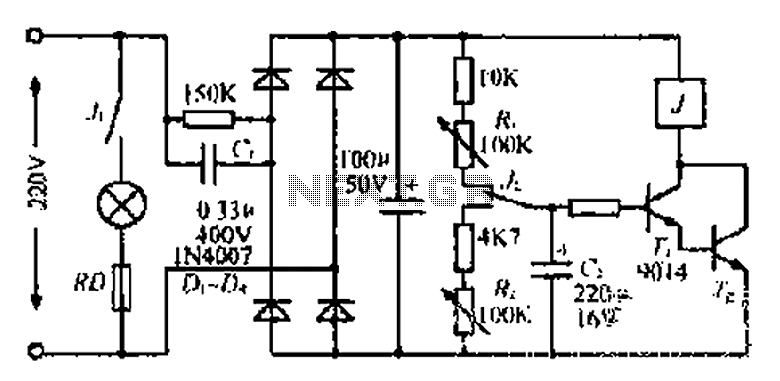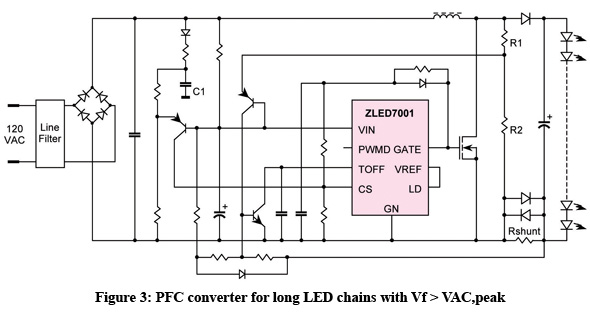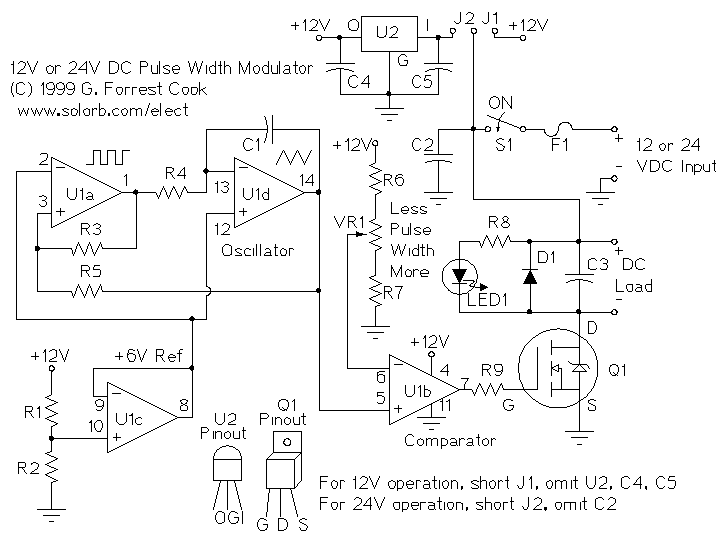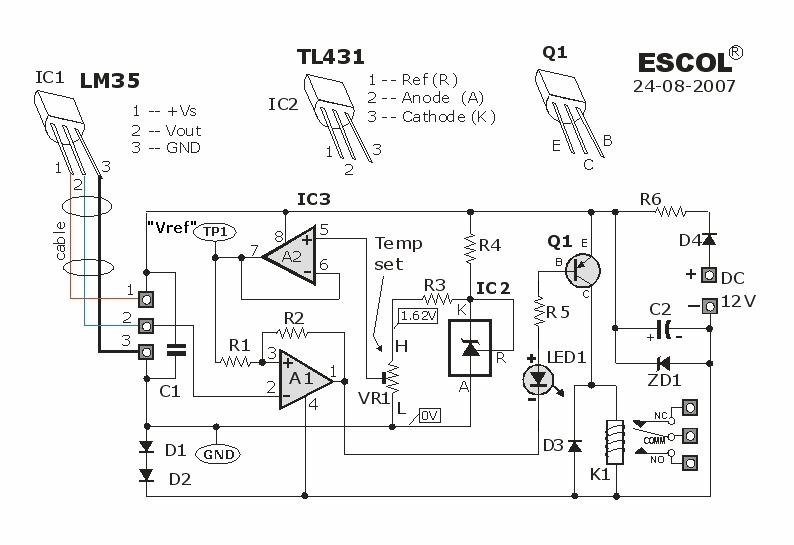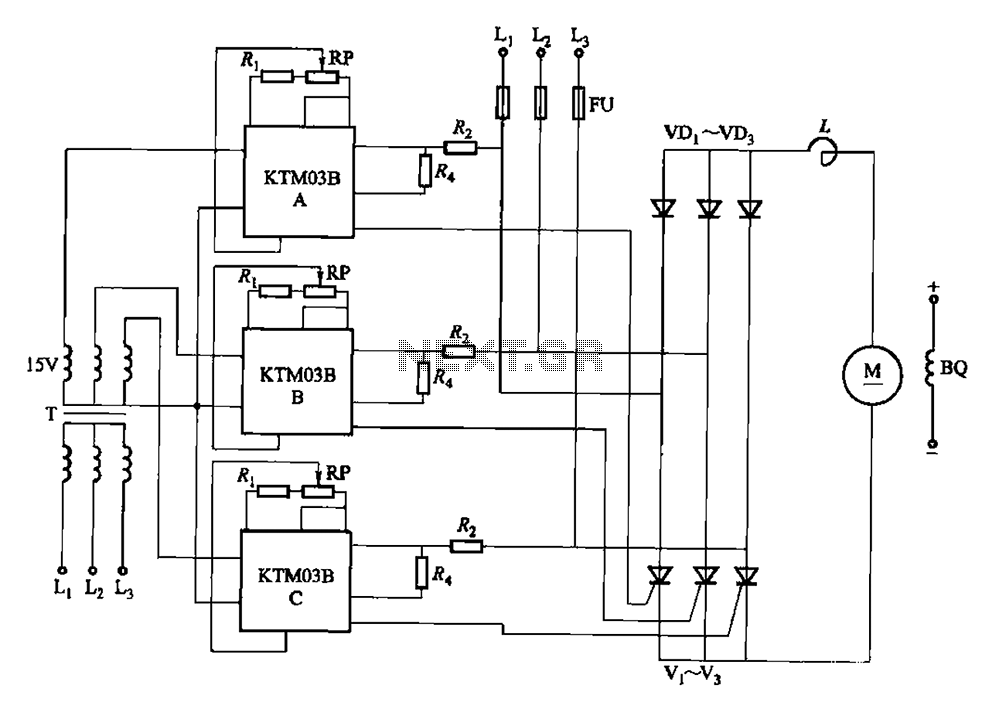
Infra Red TV Remote Control Extender
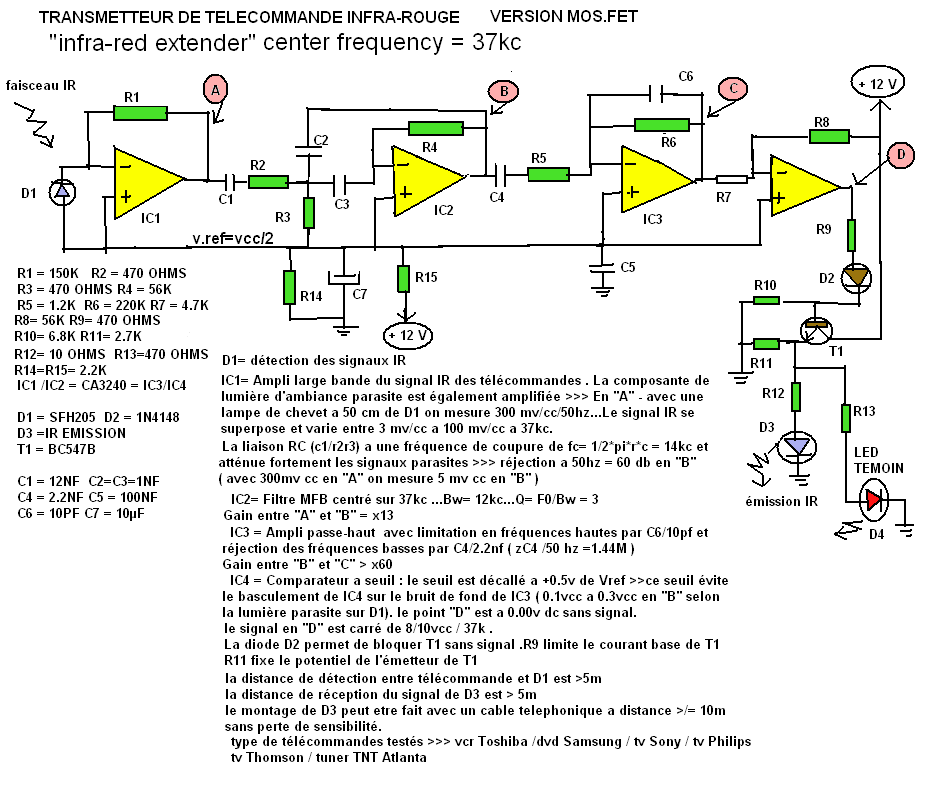
This circuit was provided by Mr. Guy Bocquillon from France. Now retired and in his seventies, Mr. Bocquillon remains active in his hobby, and his contributions and support are greatly appreciated. The notes on the schematic are in French, as Mr. Bocquillon's English is not very proficient. After constructing both the Mark 1 and Mark 2 circuits, Mr. Bocquillon has created an improved version that functions exceptionally well. His design is based on an active filter centered at a 37 kHz modulating frequency and utilizes a photodiode and operational amplifiers from Texas Instruments. Mr. Bocquillon has conducted extensive testing for his enjoyment, leading to the development of this effective circuit. It is essential to construct a shield around D1 and IC1/IC2 to prevent oscillation risks at 37 kHz. This circuit is also compatible with any other devices that use 37 kHz as the infrared modulating frequency. The original artwork was created in MS Paint and demonstrates a highly capable circuit. Schematic components designed for the Open Office Drawing program will be released later this year on the website. These components will facilitate schematic drawing and will be available in color for improved clarity.
The circuit designed by Mr. Guy Bocquillon employs a 37 kHz active filter, which is crucial for applications such as infrared communication. The primary components include a photodiode, which detects the infrared signals, and operational amplifiers (op-amps) sourced from Texas Instruments. The choice of a 37 kHz frequency is significant, as it is commonly used in remote control systems for various electronic devices.
To ensure optimal performance and to mitigate the risk of unwanted oscillations at the operating frequency, it is recommended to incorporate a shielding mechanism around the photodiode (D1) and the operational amplifiers (IC1 and IC2). This shielding can be achieved using a grounded metal enclosure or a conductive material that effectively blocks external electromagnetic interference.
The schematic itself, originally created using MS Paint, illustrates the circuit layout, including the connections between the photodiode, op-amps, and other passive components. The design may include resistors, capacitors, and possibly inductors, which are critical for establishing the desired filter characteristics and ensuring signal integrity.
In addition to the circuit's primary function, it is noted that the design can be adapted for various applications that utilize a 37 kHz modulating frequency, making it versatile for integration into different systems. The forthcoming release of schematic components for the Open Office Drawing program will enhance accessibility for engineers and hobbyists alike, allowing for easier modifications and adaptations of the circuit design. The components will be presented in color, improving visual clarity and aiding in the understanding of the circuit's operation.This circuit was sent to me by Mr Guy Bocquillon from France. Now retired, and in his seventies, Mr Bocquillon keeps himself active in his hobby and his results and support are most appreciated. The notes on the schematic are in French as Mr Bocquillon`s english is not too good. After buildiing both my Mark 1 and Mark 2 circuits, Mr Bocquillion ha s mafe an improoved version, which is working very well. His design is based on an active filter, centered at 37KHz modulating frequency and uses a photodiode and op-amp from Texas Instruments. Mr Bocquillion also says that after plenty of tests for his pleasure (because my job is became my hobby) he has made this circuit which is working very well.
It is just necessary to built a sheild around D1 and IC1/IC2 to avoid risks of oscillations around 37kHz. I would like to point out that this circuit will also work with any other appliance using 37kHz as the IR modulating frequency.
The original artwork was done in MS Paint, and as you can see is a very capable circuit. I will be releasing some schematic components I have made for Open Office Drawing program later this year onto my site. These can be used to draw schematics and will be available in colour for clarity. 🔗 External reference
The circuit designed by Mr. Guy Bocquillon employs a 37 kHz active filter, which is crucial for applications such as infrared communication. The primary components include a photodiode, which detects the infrared signals, and operational amplifiers (op-amps) sourced from Texas Instruments. The choice of a 37 kHz frequency is significant, as it is commonly used in remote control systems for various electronic devices.
To ensure optimal performance and to mitigate the risk of unwanted oscillations at the operating frequency, it is recommended to incorporate a shielding mechanism around the photodiode (D1) and the operational amplifiers (IC1 and IC2). This shielding can be achieved using a grounded metal enclosure or a conductive material that effectively blocks external electromagnetic interference.
The schematic itself, originally created using MS Paint, illustrates the circuit layout, including the connections between the photodiode, op-amps, and other passive components. The design may include resistors, capacitors, and possibly inductors, which are critical for establishing the desired filter characteristics and ensuring signal integrity.
In addition to the circuit's primary function, it is noted that the design can be adapted for various applications that utilize a 37 kHz modulating frequency, making it versatile for integration into different systems. The forthcoming release of schematic components for the Open Office Drawing program will enhance accessibility for engineers and hobbyists alike, allowing for easier modifications and adaptations of the circuit design. The components will be presented in color, improving visual clarity and aiding in the understanding of the circuit's operation.This circuit was sent to me by Mr Guy Bocquillon from France. Now retired, and in his seventies, Mr Bocquillon keeps himself active in his hobby and his results and support are most appreciated. The notes on the schematic are in French as Mr Bocquillon`s english is not too good. After buildiing both my Mark 1 and Mark 2 circuits, Mr Bocquillion ha s mafe an improoved version, which is working very well. His design is based on an active filter, centered at 37KHz modulating frequency and uses a photodiode and op-amp from Texas Instruments. Mr Bocquillion also says that after plenty of tests for his pleasure (because my job is became my hobby) he has made this circuit which is working very well.
It is just necessary to built a sheild around D1 and IC1/IC2 to avoid risks of oscillations around 37kHz. I would like to point out that this circuit will also work with any other appliance using 37kHz as the IR modulating frequency.
The original artwork was done in MS Paint, and as you can see is a very capable circuit. I will be releasing some schematic components I have made for Open Office Drawing program later this year onto my site. These can be used to draw schematics and will be available in colour for clarity. 🔗 External reference

